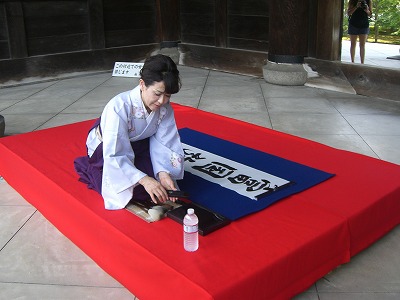
A lady demonstrates calligraphy at Sanmon, one of the gates of the temple.
The gate, built in 1628, was donated by Tohdo Takatora, one of the feudal lords
of the 17th century. The view of Kyoto from the second floor is superb.
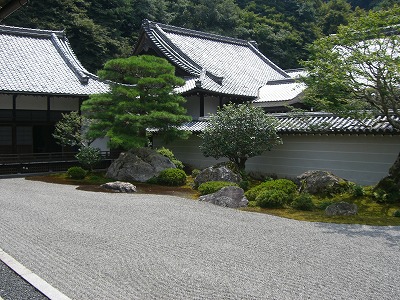
This is the garden of Nanzenji called “Tora-no-ko-watashi”, which means that
the stones in white sand show a mother tiger with her cubs crossing a river.
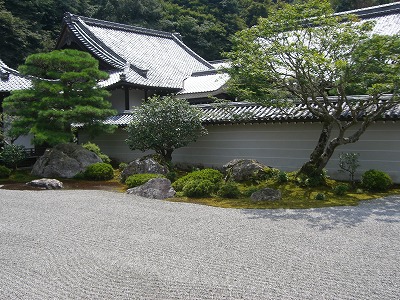
You can or may learn zen thought at this dry landscape garden constructed
only with rocks and sand.
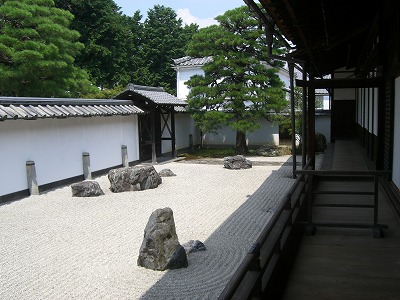
This is another garden next to Daihojo, in which there are painted sliding doors
that are designated as an important cultural property.
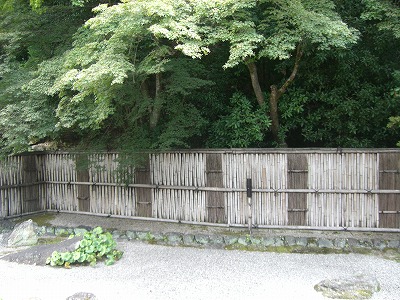
A garden view from an elevated wooden corridor
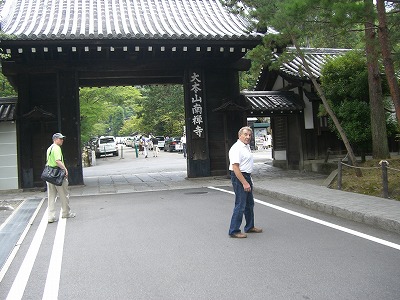
Mayor and vice-mayor of Sausalito City at the main gate of Nanzenji
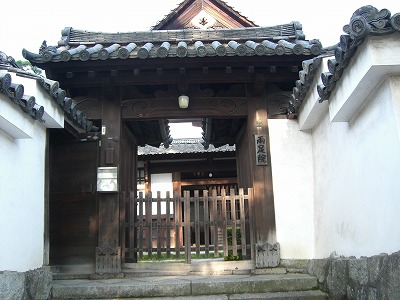
There are many sub-temples called “Tacchu” in the grounds of Kennin-ji Temple.
This is one of them, Ryosoku-in.
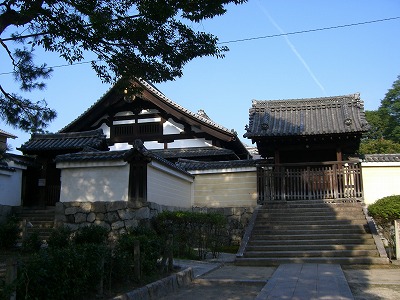
This is the gate to Ryosoku-in.
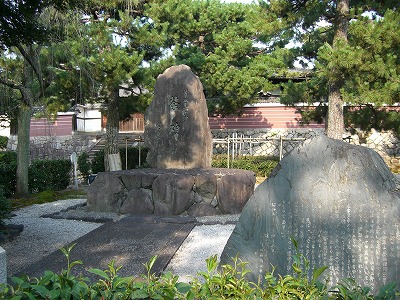
Eisai(Yosai), the founder of the Rinzai-sect Zen temple, brought back the seed
of tea from Song dynasty China in the 13th century. This is the stone monument
telling about the introduction of tea into Japan.
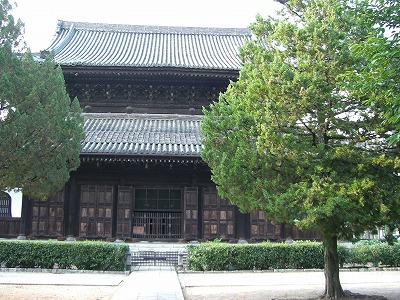
Hatto, built in 1765, is located in the center of the temple. It is also called Nenge-do.
Soryu, dragons, are painted on the ceiling of the Hatto.
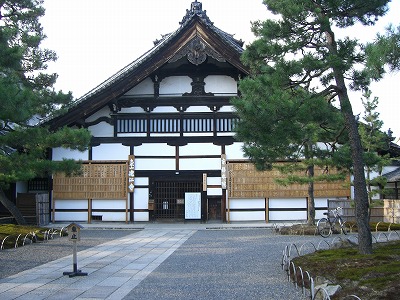
One of the main buildings
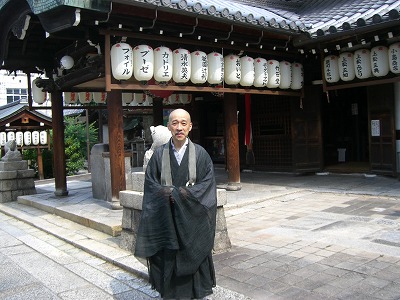
This is the priest of “Zenkyo-an”, another sub-temple of Kennin-ji. Here we enjoyed
“Zazen”.
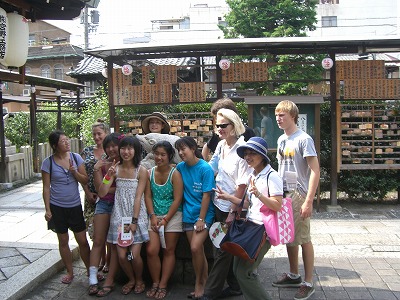
They had a very good time.
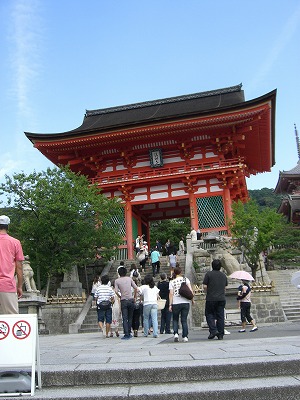
The first gate to Kiyomizu-dera, Niomon, designated as an Important
Cultural Property, is roofed with cypress bark.
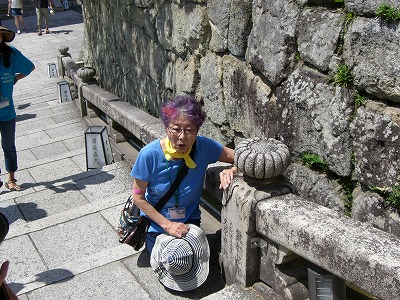
In the middle of the stone steps after going through the red gate to Kiyomizu,
Ms. Matsuno Patrick has found a stone on which her father’s name had been engraved.
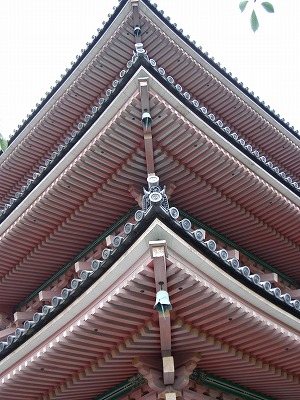
This is a view of the three-story pagoda seen from the foot of it.
This is also an Important Cultural Asset.
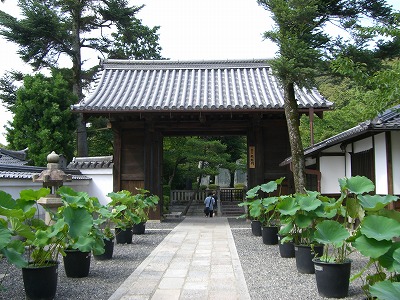
Kita-somon gate is an Important Cultural Property.
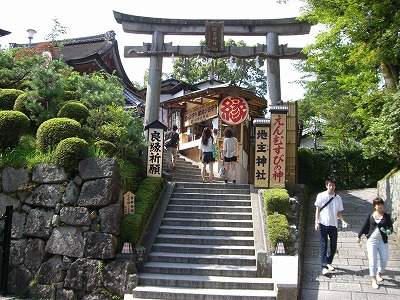
Jishu-jinja Shrine is just behind the main hall of Kiyomizu.
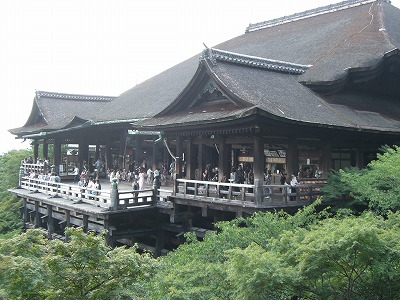
The main hall, built on a mountainside using 78 pillars, was rebuilt in 1633 and
is designated as World Heritage site as well as a National Treasure. It has a
famous 13-meter tall dancing stage, which offers a sweeping view of Kyoto.
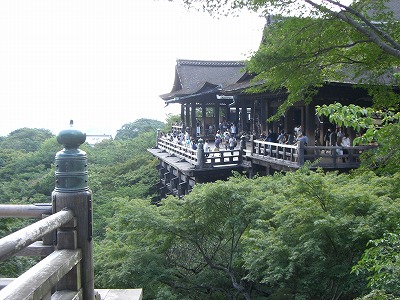
This is a view from Oku-no-in, an Important Cultural Property.
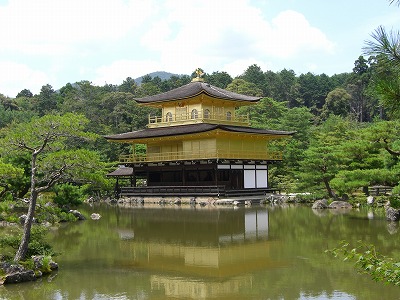
Shariden Kinkaku, commonly called the Golden Pavilion, is located within
the temple precinct of Hokuzan-Rokuonji Temple in kyoto.
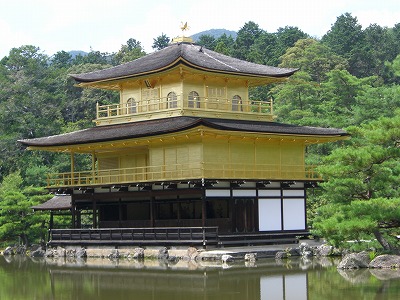
The second and the third floors, covered with gold leaf, are reflected in
the Kyokochi Pond. And a mythological phoenix perches on the top of
the roof. This is the Pure Land Paradise that Yoshimitsu Ashikaga imagined,
who was the third shogun of the Muromachi Shogunate in the 14th century.
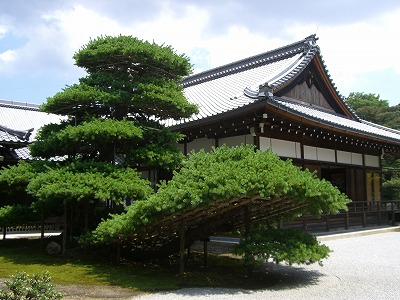
Rikusyu-no-mastu is a pine tree shaped like a sail boat. It is said to have
started from the Bonsai planted by Yoshimitsu.
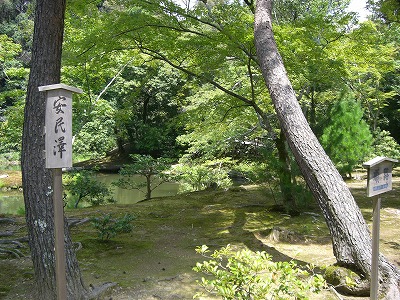
Anmintaku is is a pond which was made in the villa of Kintsune Saionji
who was a grand minister of state in Kamakura period.
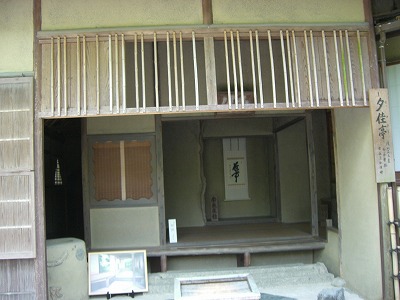
This is a tea house, Sekkatei. Nandin is used for the alcove pillar of the house.
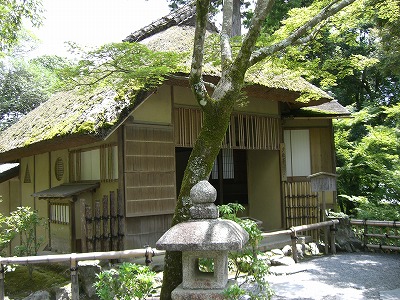
Sekkatei was built in Edo period.
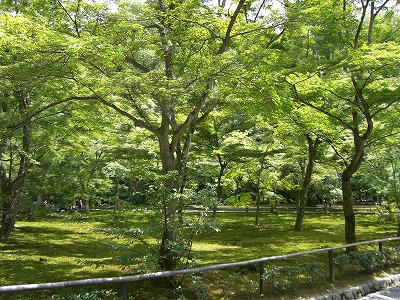
Beautiful garden in the precinct of the Rokuonji
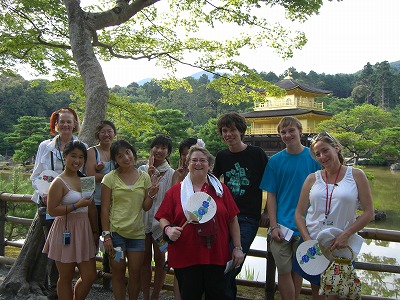
Nice people from the City of Sausalito, California
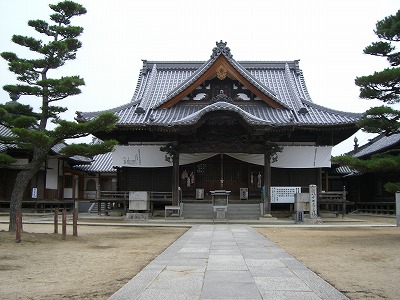
Main Hall in Nagaoji Temple
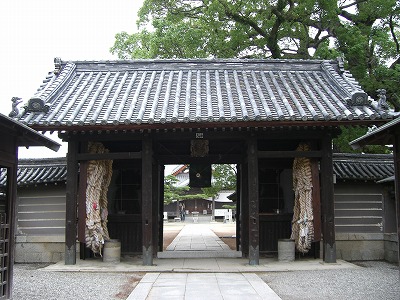
Sanmon Gate
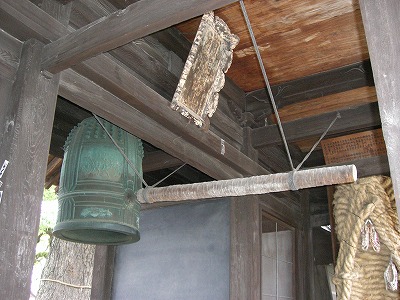
Unusual to have a bell in the Sanmon Gate
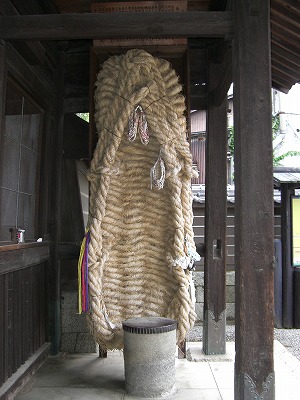
Large Waraji located at the Sanmon Gate
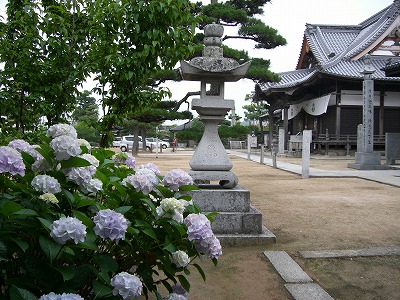
Precinct of the temple
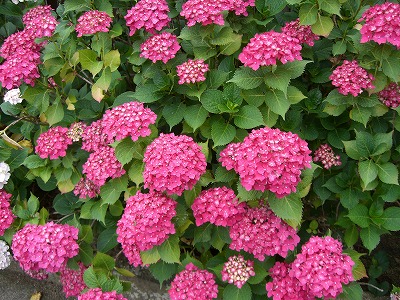
Red hydrangea in the precinct
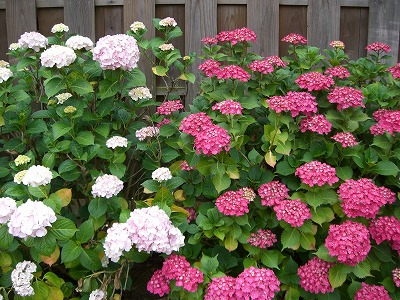
Red and white hydrangea








































